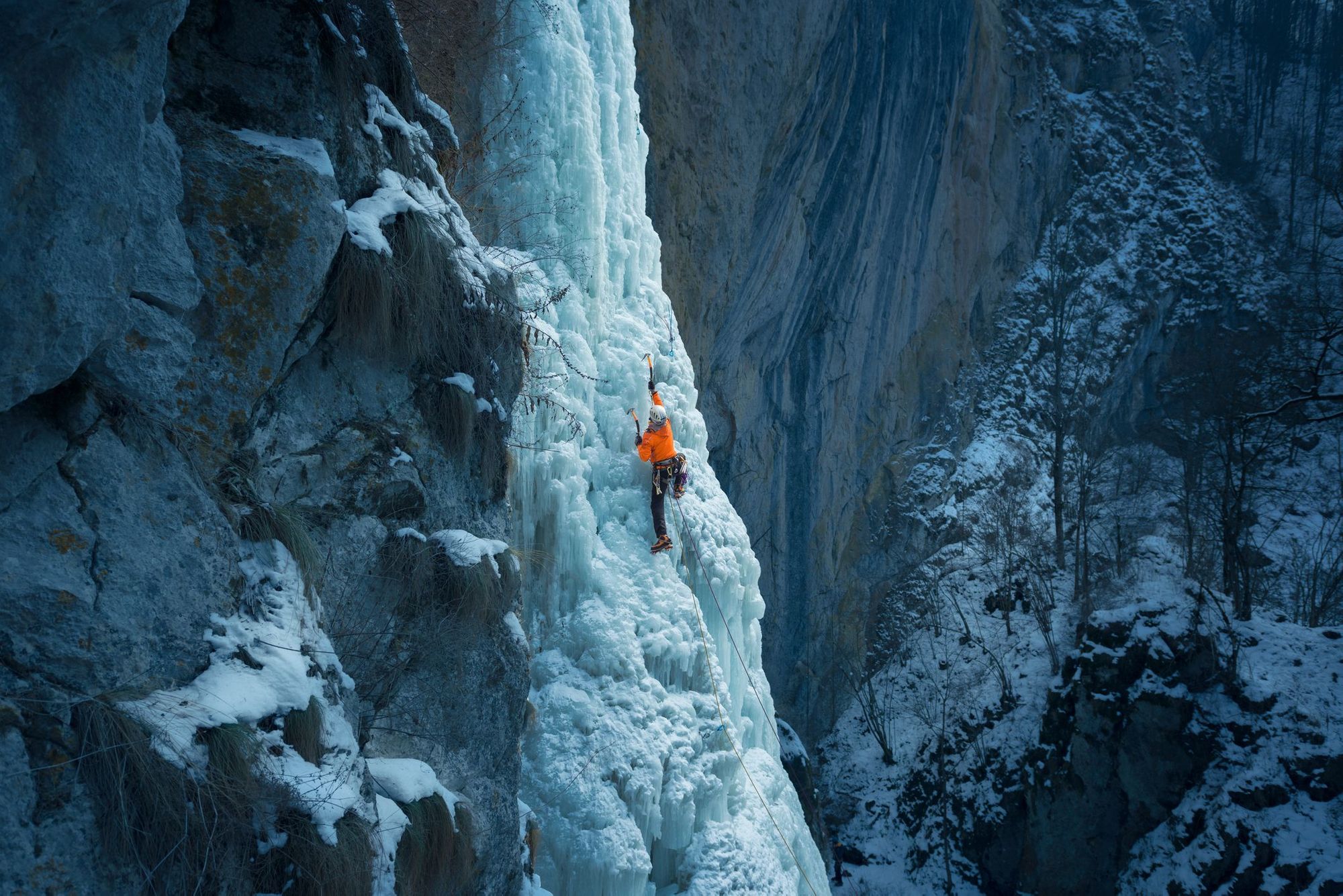Connor Holdsworth spent his childhood scaling gritstone outcrops in Yorkshire, taught by his father. But it was climbing during winter that really cemented his passion for the sport.
“I remember, really vividly, the first time I went winter climbing and just having this really intense experience,” he says."You're really fighting for every inch in no way that I've ever experienced anywhere else in the world. You're looking at a crack thinking ‘am I going to be able to put my ice axe in there or is that ice going to be good enough for me to stand on?’
“All of the good climbing in Scotland is in these north-facing corries, so even on a nice day you've hunted out the shadiest part of the mountain. Snow can come from above you. When you look up, you can't see anything and your eyelashes start to get all frosty. And then you look down and the snow will blow upwards. It's absolutely wild - type two fun, at its best.”
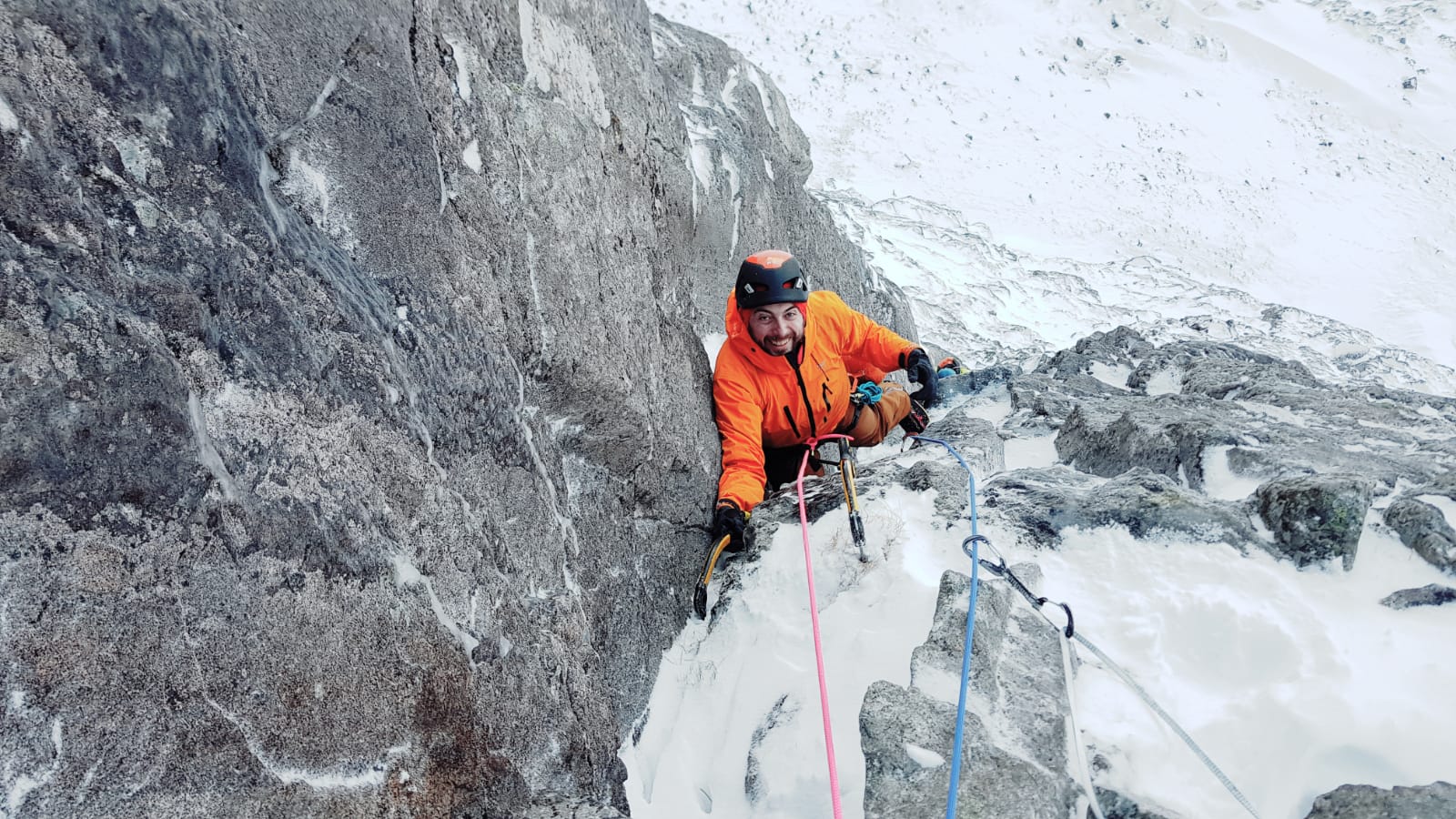
Connor admits that this description might not appeal to everyone. But he thrives on the intensity of the climb, mixed with the sense of achievement afterwards, and his overall enjoyment of being out in the mountains. So much so that he’s settled in Scotland’s Fort William area and set up a mountaineering company. He shared his tips and experience in this beginners’ guide to winter climbing.

How do I prepare physically and mentally for winter climbing?
Physical Training
“The dirty secret about winter climbing is, it's really hard work,” Connor says. “You have to get up really early. On our winter climbing course we spend two or three days out in the mountains. Every day has around 900 metres of ascent - you’re out for around eight hours. We cover a mixture of terrain, and the pack that you will carry weighs around about six to 10 kilos.”
In short, you need to have a good level of physical fitness to go winter climbing. It’s a full body workout that requires good balance, muscular strength and endurance.
The dirty secret about winter climbing is, it's really hard work
One of the best ways to train and prepare is to visit your local climbing wall (if you have one). You can also hit your local gym for a full body workout - seek advice from a personal trainer about the types of exercises to do. Build endurance through activities such as trail running or hiking - bonus points for going out in all conditions.
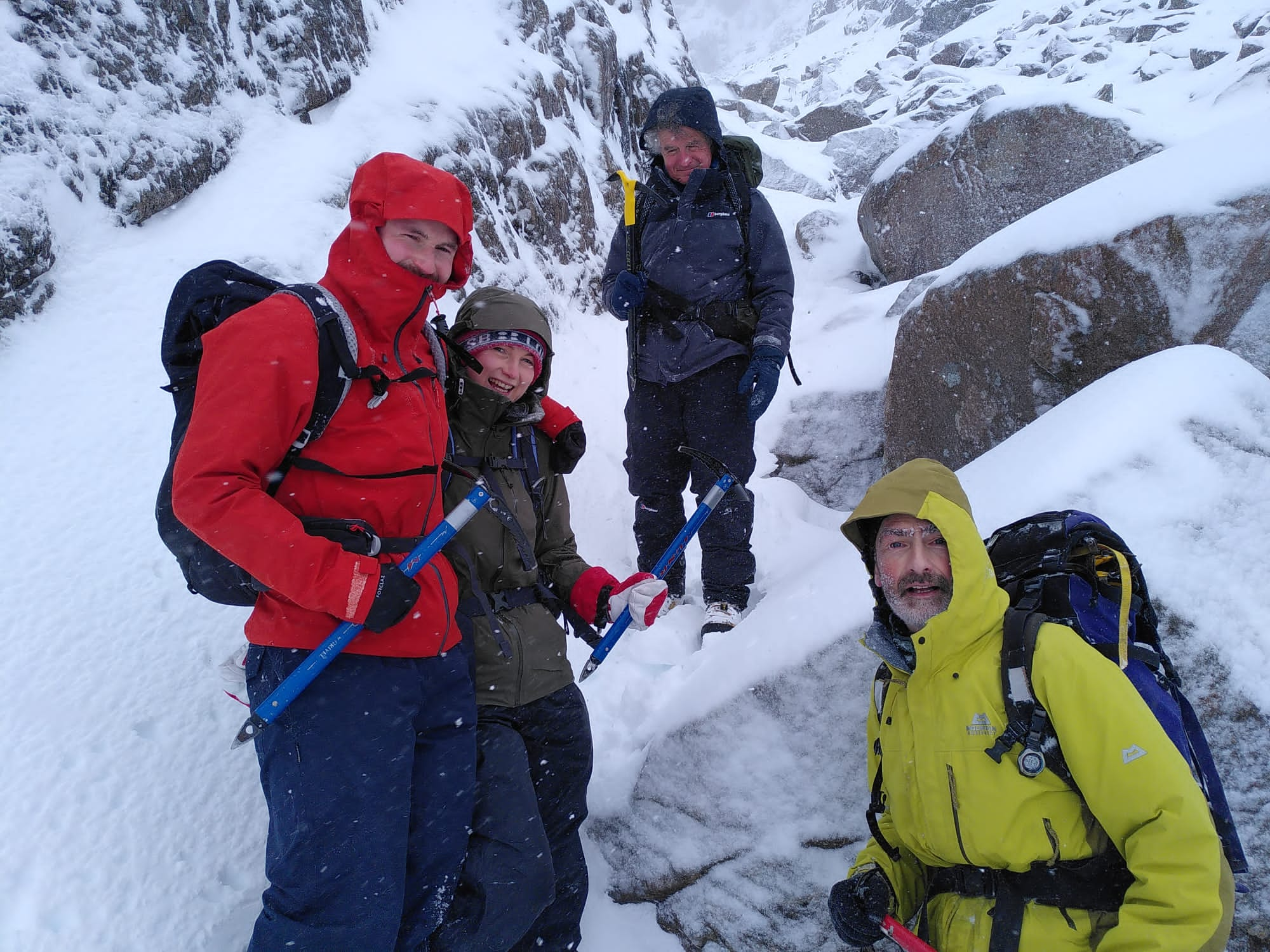
Mental Preparations
Connor recommends bringing a “robust mindset” on a winter climbing expedition. “People need to arrive ready to put in the graft. Just have a big smile on their face and be enthusiastic about just getting a bit uncomfortable,” he says.
Dr Sophie Redlin is an expedition medic who has been developing mental health training for remote environments. She explains that any emotional problems you might encounter at home - such as difficulty controlling your anger, or giving up too quickly - are magnified in such environments.
“My advice would be to think ahead as much as possible, and then put in place strategies for yourself to cope with these challenges,” she says. “We can't foresee everything, but in a similar way to packing your raincoat and waterproof trousers, think about what you could take with you to help in a situation when you feel overwhelmed. Or, if you tend to get angry, think about the strategies that can work for you at home, and how you could apply them to an expedition environment.”
People need to arrive ready to put in the graft. Just have a big smile on their face and be enthusiastic about just getting a bit uncomfortable
Adventurers like Belinda Kirk are keen to stress the life-enriching power of type two fun. “You need to be in the moment. Perspective is a good thing. Is it really so bad? For me, a bad day on Dartmoor is still better than a good day in the office,” Belinda says.
What techniques do I need to learn for winter climbing?
Basic Climbing Skills
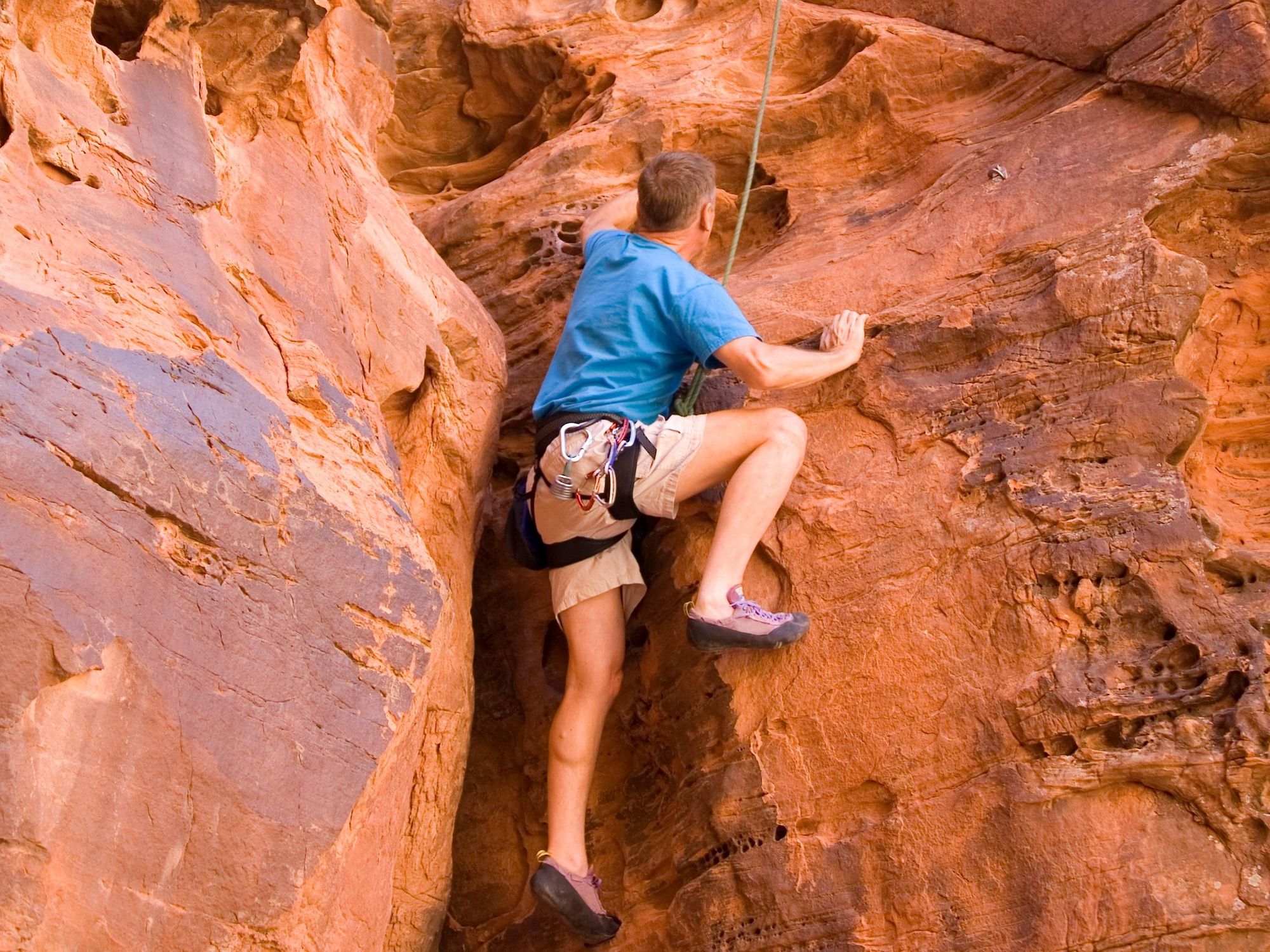
According to Connor, if you climb in warmer conditions, you’ll have the basic framework for winter climbing.
“Climbing isn't a complicated sport. We teach three knots and they are applicable to almost every circumstance,” he says. “If I think about my personal climbing that I do all over the world, those techniques don't change. We just do the same thing really well. And that creates this framework where we keep safe.”
It would be impossible to condense all the skills you need for climbing into a few short paragraphs. But a good starting point is BMC’s FUNdamentals of climbing, which says you need to be able to successfully develop agility, balance and coordination, in order to transfer your weight from one balance position to the next. Alongside basic climbing skills, you’ll also need to learn how to use crampons and ice axes.
Using Crampons
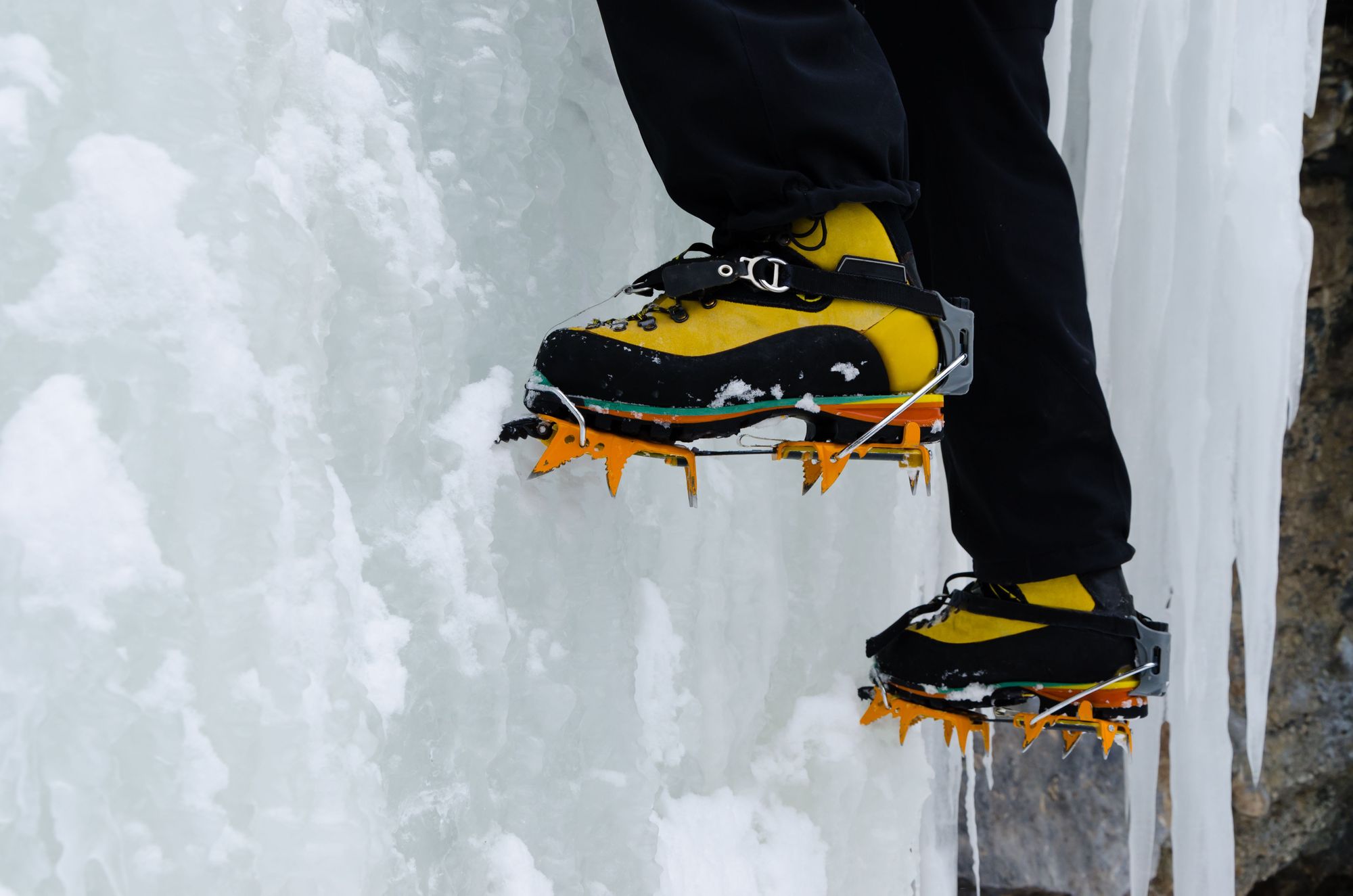
When you’re climbing or mountaineering in winter, you’ll need to use crampons when you ascend above freezing level. However, you use crampons differently depending on which activity you’re doing.
“We have mountaineering footwork for your crampons, and then we also have climbing techniques. There’s a clear-cut transition - it’s the same with the ice axe,” Connor says.

“When walking and mountaineering with crampons, we try and keep as many of the crampon points engaged with the snow as possible. It means that there's less strain on our legs and our calves. We pick the line of least resistance and zigzag our way up a slope, keeping the crampons flat against the snow. When we reach small steepenings, we will engage our front points, but normally for a small amount of time.
“When we transition to climbing, we are now getting into the vertical plane and engaging in climbing techniques both with ice axes, crampons and ropework. Then we start looking at mostly using the front points of the crampons. We have our feet level or even our heels lowered slightly, so the strain is less on your calves again. You need to engage the crampons in the way that they're designed to bite into the snow and ice and onto the rock.”
Learning to use crampons is an integral part of what you’ll learn on a winter mountaineering or climbing course. While you can watch instructional videos on the topic, there’s no substitute for strapping a pair of crampons to your feet and having a go.
Using an Ice Axe
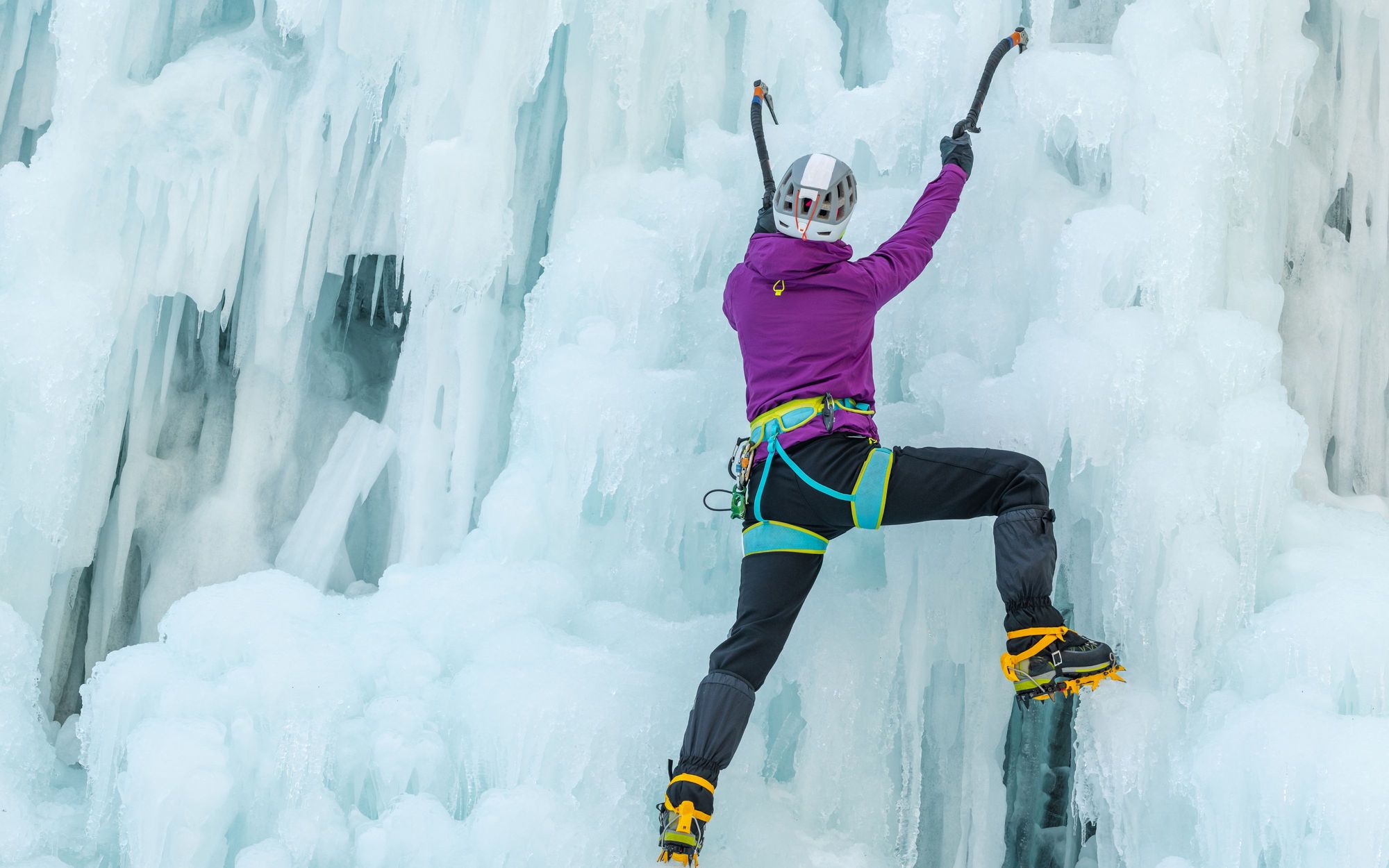
When you use an ice axe during winter walking or mountaineering, the purpose of doing so is for support. Grip the top of it and use it almost as you would a hiking staff.
If you fall, you can employ a technique called self-belaying - driving the bottom spike of your axe down into the ice to prevent you from sliding. Meanwhile, if you fall and start to slide, you can perform a self-arrest by digging the pick of your axe into the snow, and adopting a position that allows you to ‘brake’ (knees wide, feet up).

Throughout winter climbing, ice axes act as ‘handles’ - you embed them into the ice or rock, and grip them to help keep your balance as you move your feet up. It’s important not to over-rely on them and use them to pull yourself up - you’ll get tired very quickly!
You’ll need to choose where to place your axe, and then swing the axe back and drive it into the ice. Good axe placement is vital, and it’s something you’ll get better at with experience. You’ll learn how to spot concavities or previous placements, and learn how to decode the sound and feel of a good tool placement.
What are the best winter climbing safety practices?
Avalanche Safety Training

Connor’s company teaches ‘Be Avalanche Aware’ protocol on its winter climbing courses. When making any decision, one must consider three factors: the weather and mountain conditions; the people in your group and their skill level; and the terrain of the place you’re visiting. It’s important to return to this at key moments during the day.
“We constantly have to be feeding that into our information matrix and be making really good objective decisions,” Connor says.
Lots of winter mountaineering and climbing courses teach avalanche safety training, but if you’re planning on climbing independently, it’s imperative to do your own research into mountain safety. Members of any mountain rescue team will reiterate the importance of this - they see what happens when things go wrong.
Check the Weather
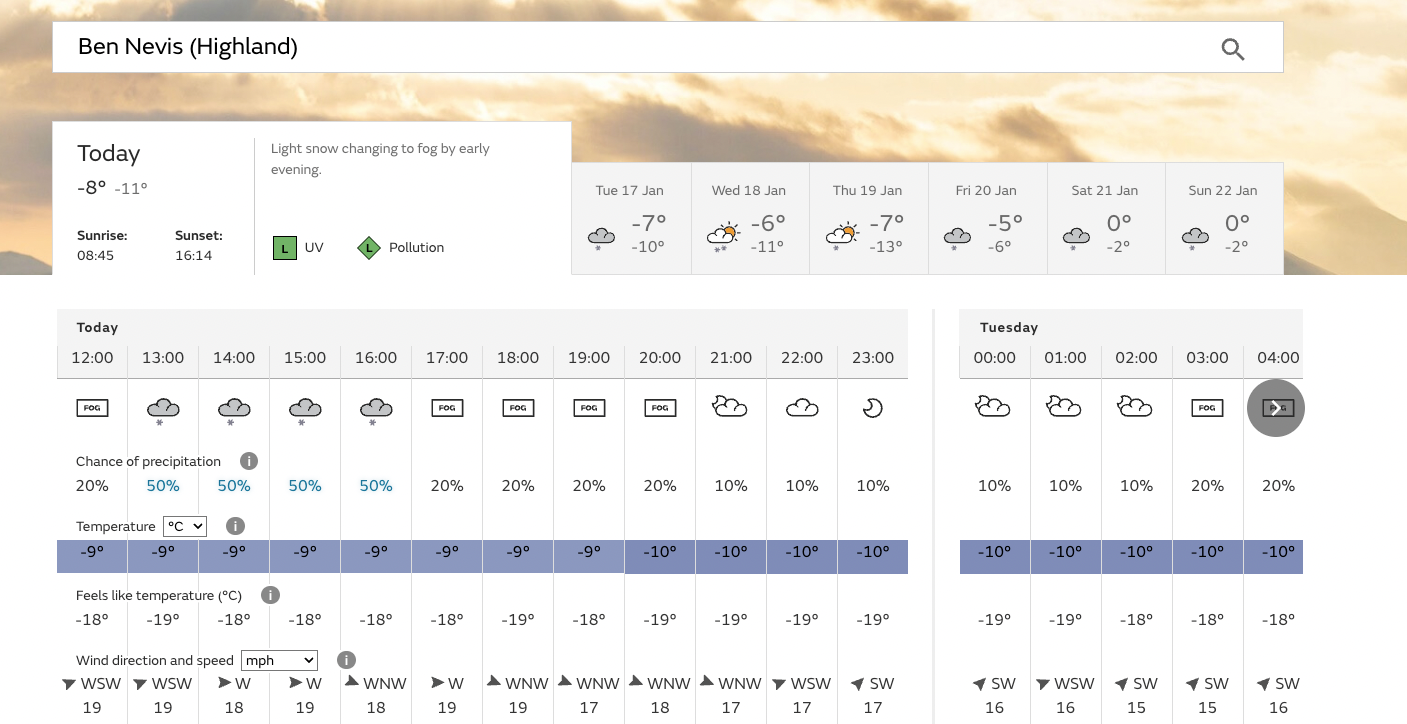
Checking the weather is a critical part of planning a winter climb.
“There are three websites that I use to check the weather in the mountains. The Met Office gives great summit-specific weather forecasts - so you can check the weather for the summit of Ben Nevis,” Connor says. “There's also ways of checking the weather halfway down now to get an indication of where the freezing level will be. The Mountain Weather Information Service is the other one that is really useful.”
“We also check the Scottish Avalanche Information Service. A really hardcore team of strong mountaineers and scientists go out into the hills every day, all the way through the winter. They assess the snowpack and write up what they think the snow will be doing the next day, judging on the current forecast for the next day.
“For everybody reading this article thinking about going out into the hills in winter, that should be the first or second place that they stop on their planning journey. You know, that weather forecast and that avalanche forecast. They go hand in hand with every decision that we will make.”
What are the essential pieces of gear for winter climbing?
Clothing and Insulation
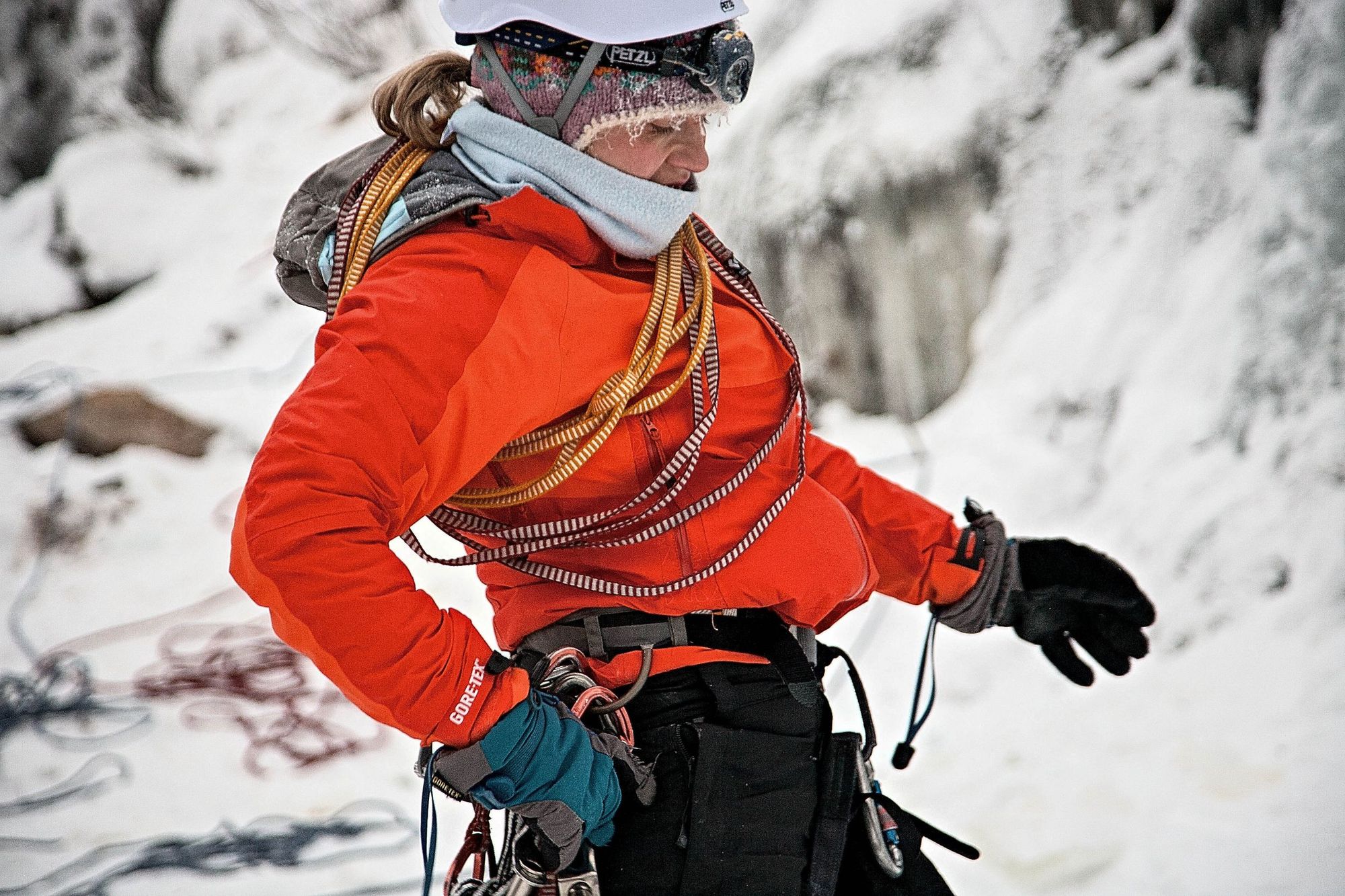
Wearing the right clothes is vital to enjoying winter climbing and being safe. Connor recommends the following:
- A waterproof jacket
- Waterproof overtrousers
- Insulating layers
- A few pairs of warm gloves
- Ski goggles
- Suncream
- Sunglasses
- A balaclava or hat
- A large enough rucksack to carry everything (around 45 litres)
- Gaiters
- Food and water
- Walking poles
- A few pairs of warm gloves - freezer gloves are a cheap but effective option
Connor stresses the importance of having good waterproof clothing.
“We start at sea level and the freezing level might be at 600 metres. The first hour of your day might be in the rain. Then you transition into the snow and at the end of the day, you're going to transition from snow to sleet to rain again. So having good quality waterproofs is important.
My top tip for packing is to have one spare of everything at the bottom of your rucksack, that's totally dry and ready to go
“My top tip for packing is to have one spare of everything at the bottom of your rucksack, that's totally dry and ready to go. A spare pair of warm gloves, a spare insulating jacket, a spare sandwich. That's in case the day changes from seven hours to 12 hours. I want to still be able to operate comfortably,” he says.
Ice Axes
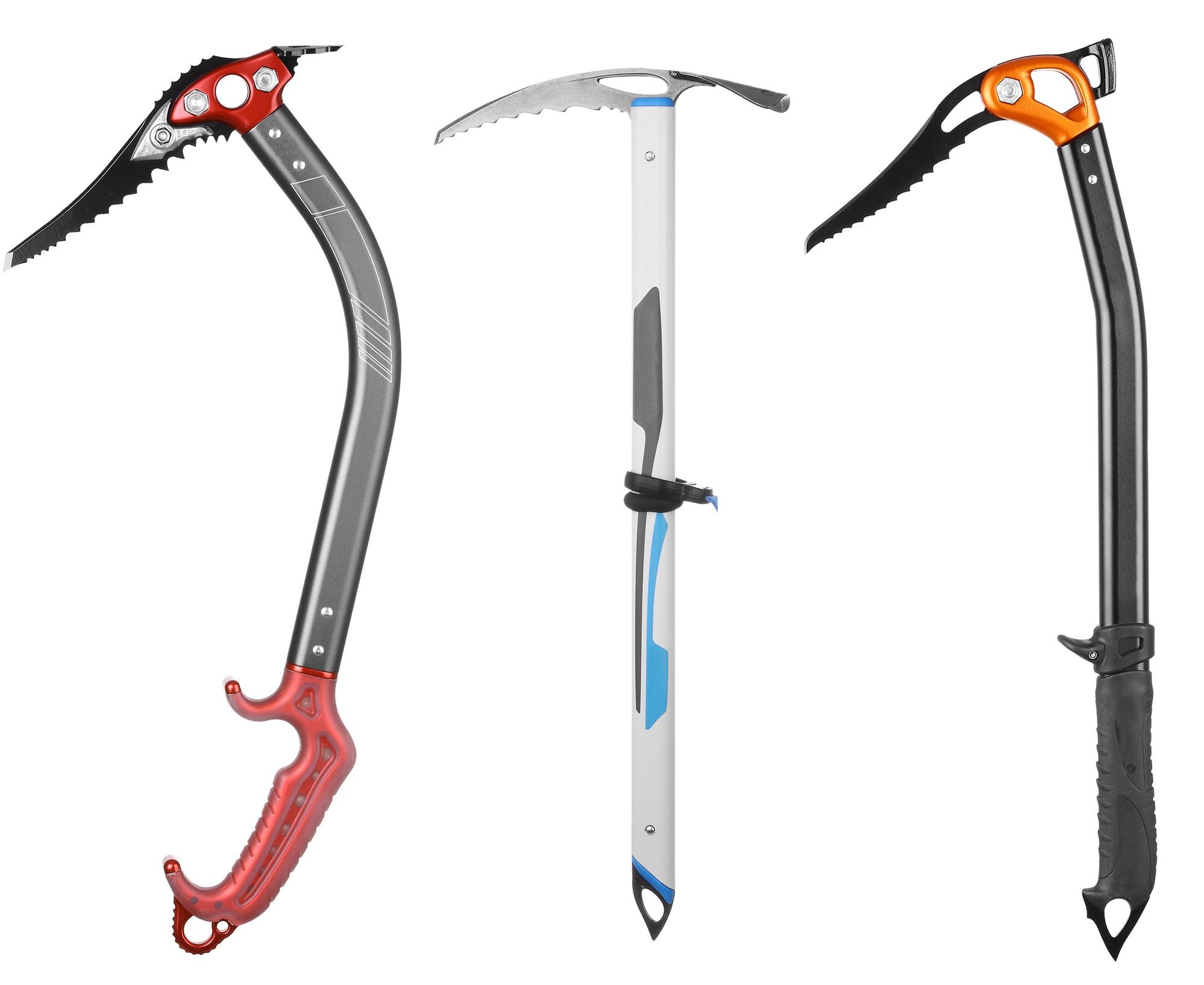
There are three different types of ice axe - walking axes, alpine or mountaineering axes and technical axes. A walking axe has a long, straight shaft, to give you stability and support when walking up snowy slopes. It has a long, straight pick to help you self-arrest.
A technical axe is designed for tough winter climbing and ice climbing. Technical axes come in pairs - one has an adze and one a hammer. Use the former to clear rime, and the latter to hammer protection into cracks. These handles are shorter and more curved, to enable you to swing them more easily on steep walls.
Meanwhile, a mountaineering axe lies in between a walking axe and climbing axe. It has a curved head and shaft to give it an easier swing, and has a long enough shaft to be used as support when walking. For winter climbing, you’ll either be using a technical or mountaineering axe - it’ll depend on how tricky the routes you tackle are.
Crampons
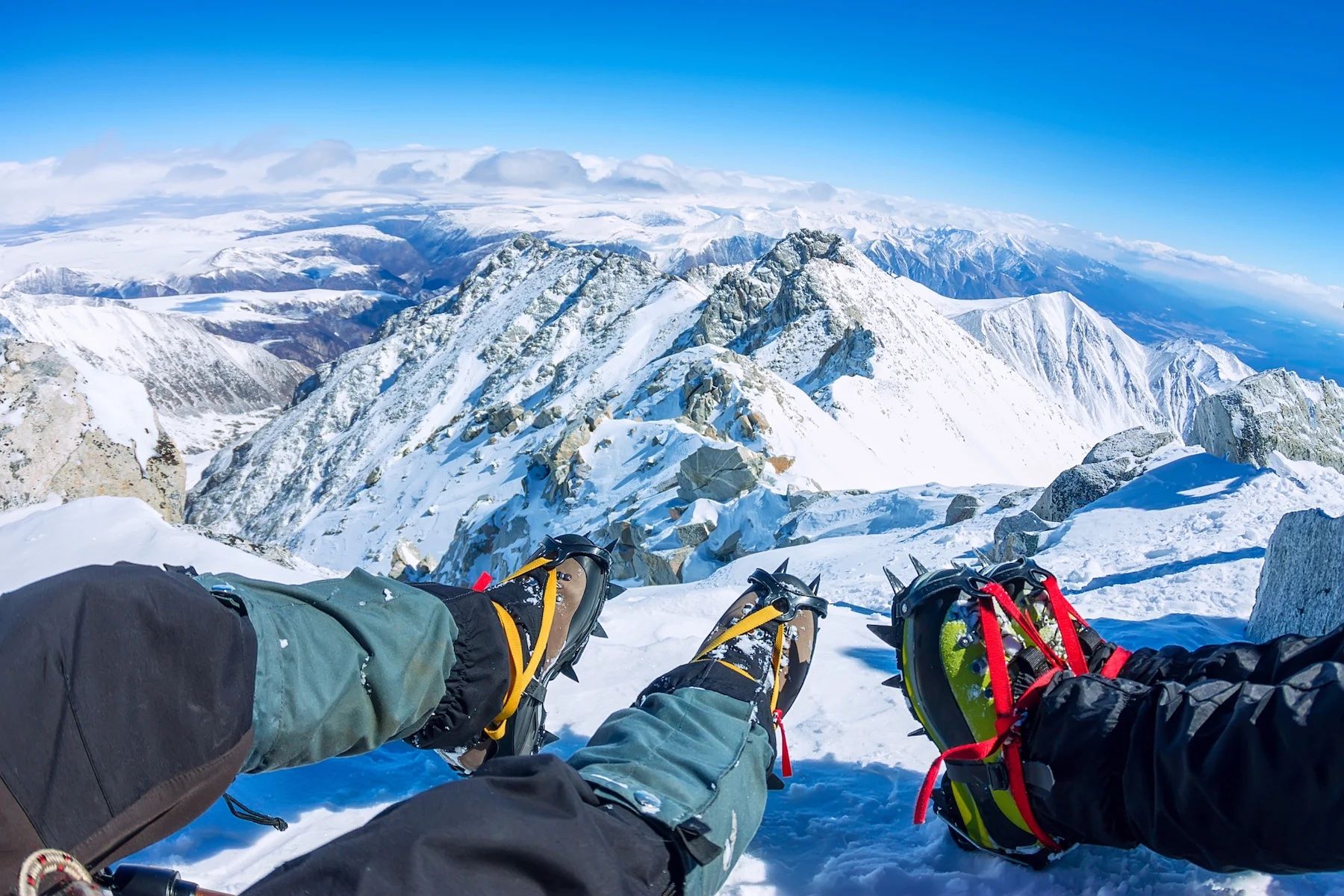
Crampons are essentially a spiked heel that you strap onto your existing hiking boot, and which help you grip the ice. There are a lot of different types of crampons, all for different uses and with different types of bindings.
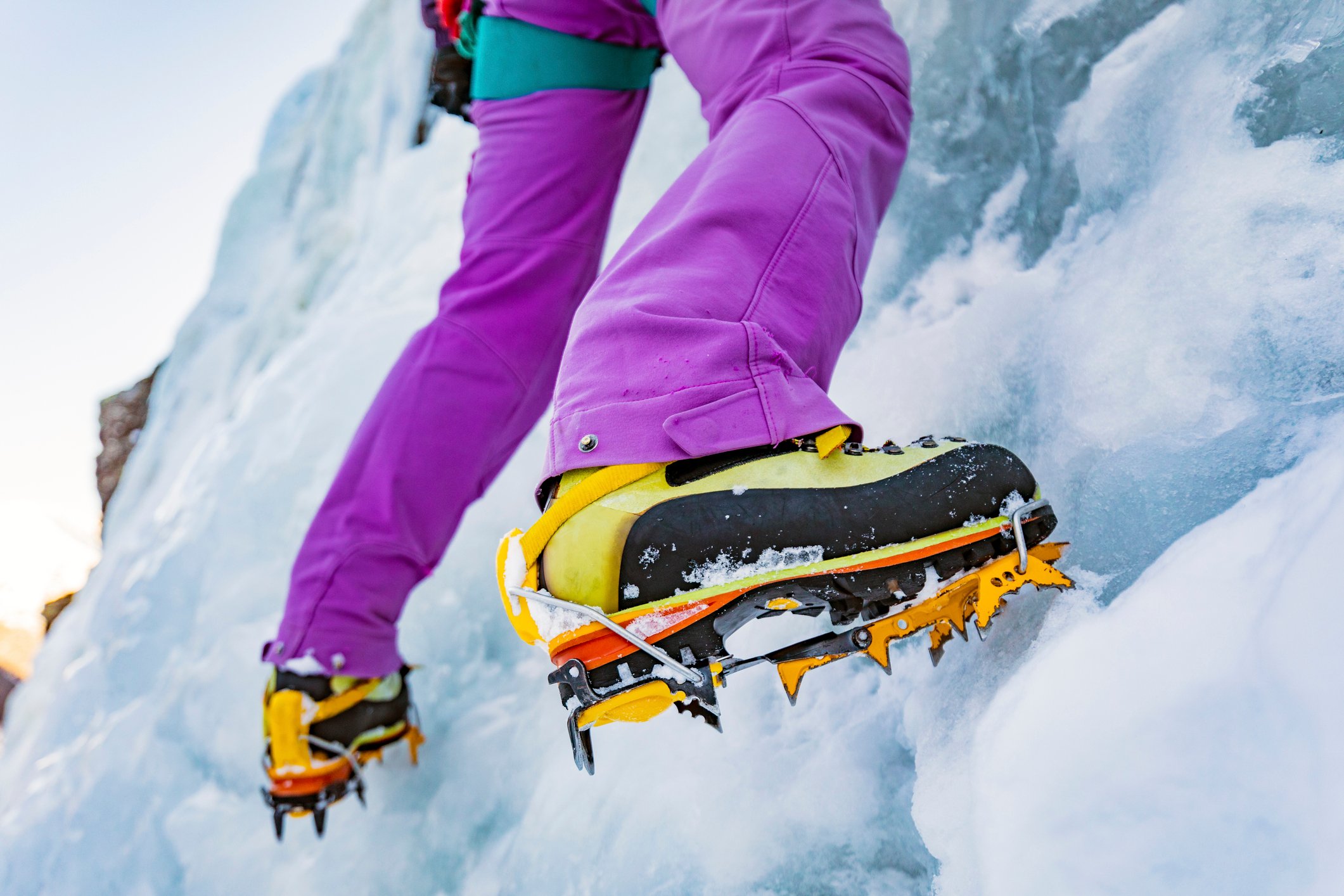
For ice climbing, C3 crampons are the preferred choice - they’re very rigid and have sharp metal points to drive into the ice. C2 crampons are easier to walk with; although the points aren’t as large, they have sharp front points to gain a hold when climbing.
Ropes, harnesses and helmets
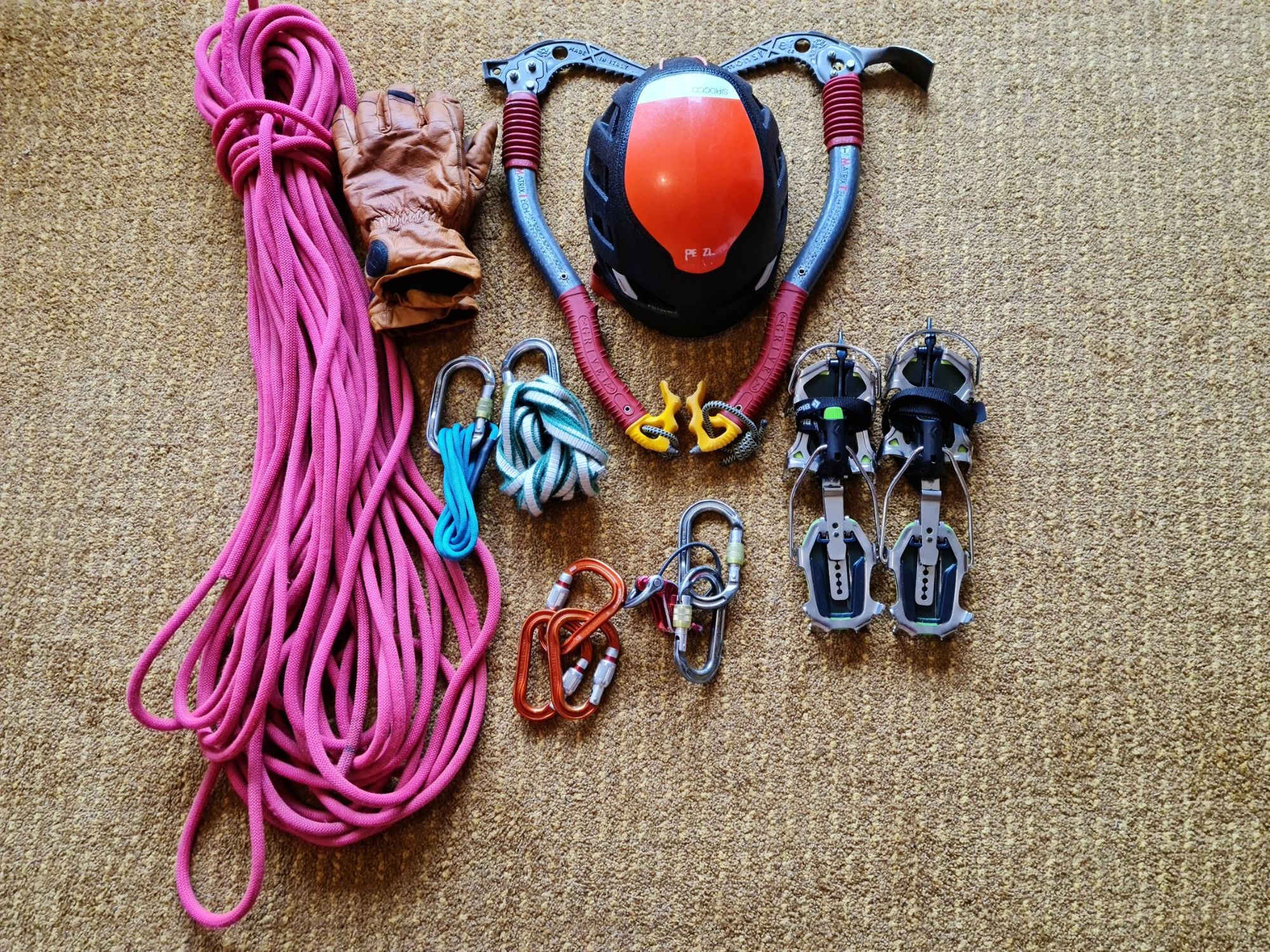
You’ll also require a climbing harness, climbing rope and a helmet. If you’re attending a course, these will be provided for you. Instructors will also show you how to make sure this equipment fits you correctly.
What are the best options for budget-friendly winter climbing gear?
Connor knows that for some first-time climbers, the cost of gear can feel prohibitive. “Ice axes are £350, boots are £500 and crampons £200 quid. That's before we've even started to include the rope and climbing equipment,” he says.
There are several ways to lower this cost - buying cheap, inferior gear that could be unsafe is not one of them.
Gear Rental
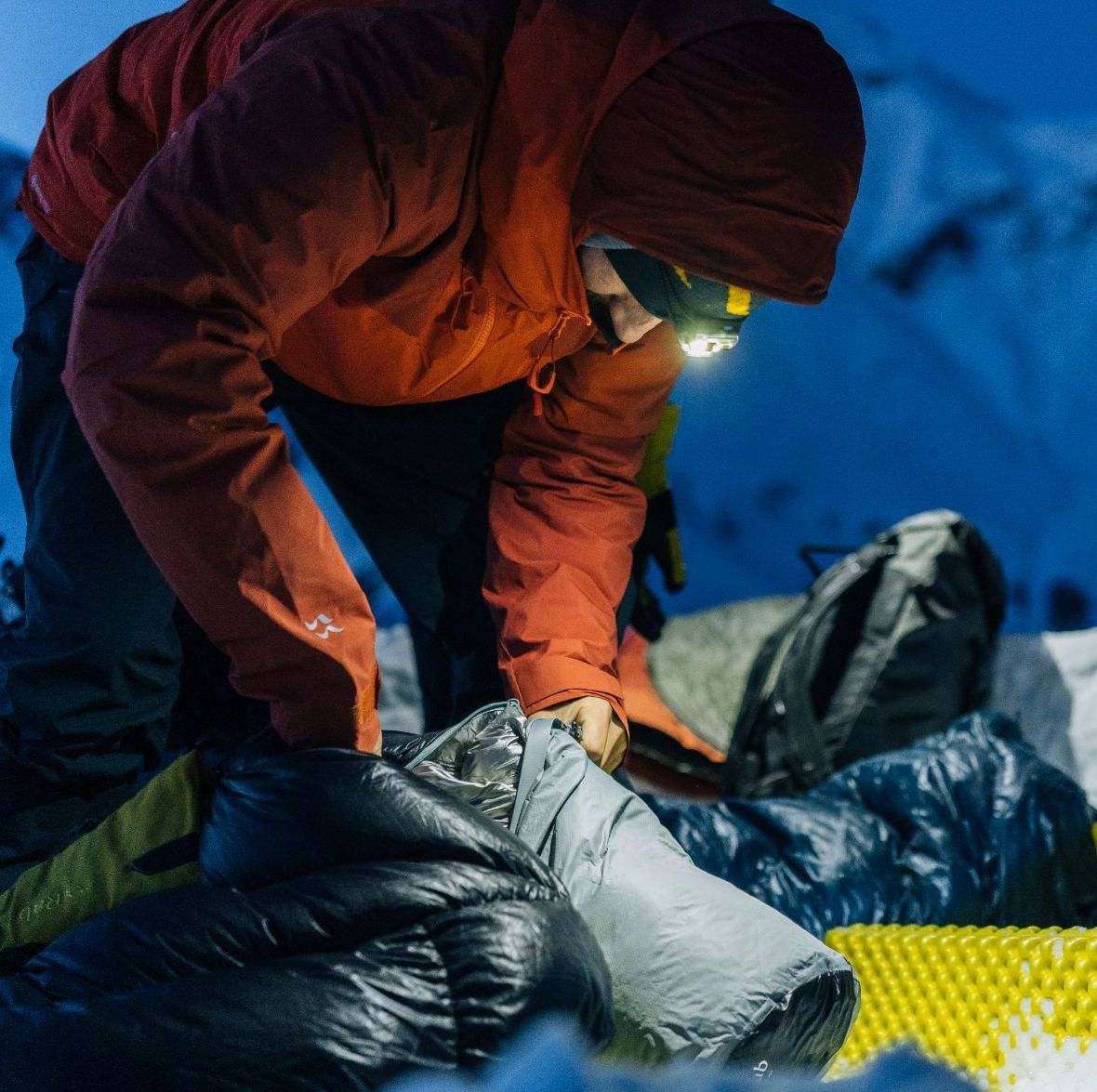
Renting outdoor gear and expedition equipment is becoming increasingly popular. This is a great option for beginners wanting to try out expensive equipment for the first time. Check out sites such as Scottish Mountain Hire for snow boots, crampons, ice axes and more. Rab Rental hires out its top of the range down jackets, waterproofs and more for a fraction of their retail prices.
It’s also worth noting that many winter climbing courses will provide all the technical equipment you need in the price, including helmet, harness and ropes, ice axes and crampons. This will save you from investing in specialised equipment before you’ve even tried out winter climbing.
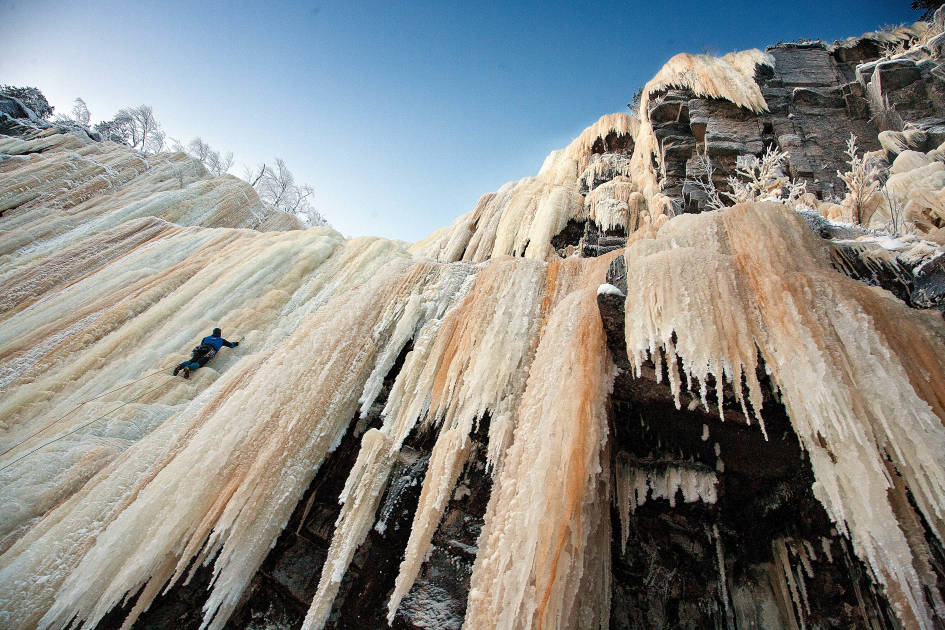
Advice on Buying Second Hand Climbing Gear
The opinions on buying second hand equipment vary. For some people, it’s just not worth the risk - ropes could be at the end of their lifespan, helmets could be cracked and carabiners rusted. For others, it’s a valuable way to save money.
In our opinion, the best route lies somewhere in the middle. By all means, make some savings by purchasing non-lifesaving gear second hand (things like shoes and climbing rucksacks). But vital, lifesaving gear such as helmets, harnesses and ropes is best purchased new. The risk of buying second hand gear is mitigated if you’re buying an unused item in its original packaging, or if you know the item’s use history and age.
What are the best ways to learn more about winter climbing?
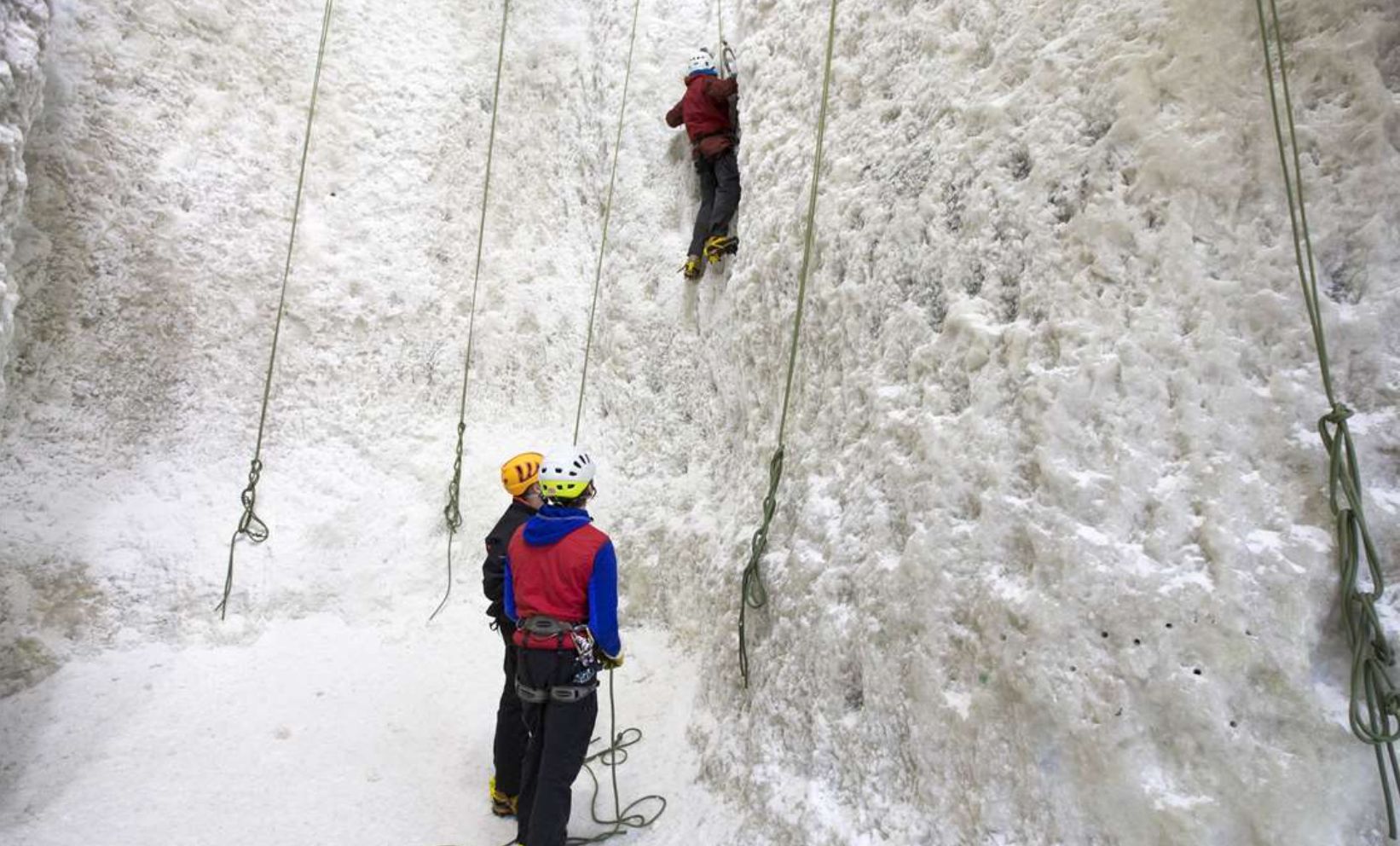
Connor was taught to climb by his father, and received little professional instruction when growing up.
“When I started winter climbing I went out on my own, or went out with friends. But I was surrounded by this community of climbers where I could ask lots of questions. If you're living in London, or Glasgow or Manchester and you didn't have that surrounding you, I imagine it would be quite stressful,” he says.
Start low and work your way up. There's lots of skill that you learn in those easy grade routes
There are plenty of resources where you can find out more about winter climbing. If you join a local climbing centre, chances are they’ll run winter climbing trips. There are an increasing number of climbing groups on social media where you can find a climbing partner. There are also some good online resources, such as the website of British Mountaineering Council (BMC).
“If you're thinking about doing it independently, approach it like an exam where you can study for it,” Connor says. “Start low and work your way up. There's lots of skill that you learn in those easy grade routes that are really important when you start climbing higher grades.”
Winter Climbing Courses
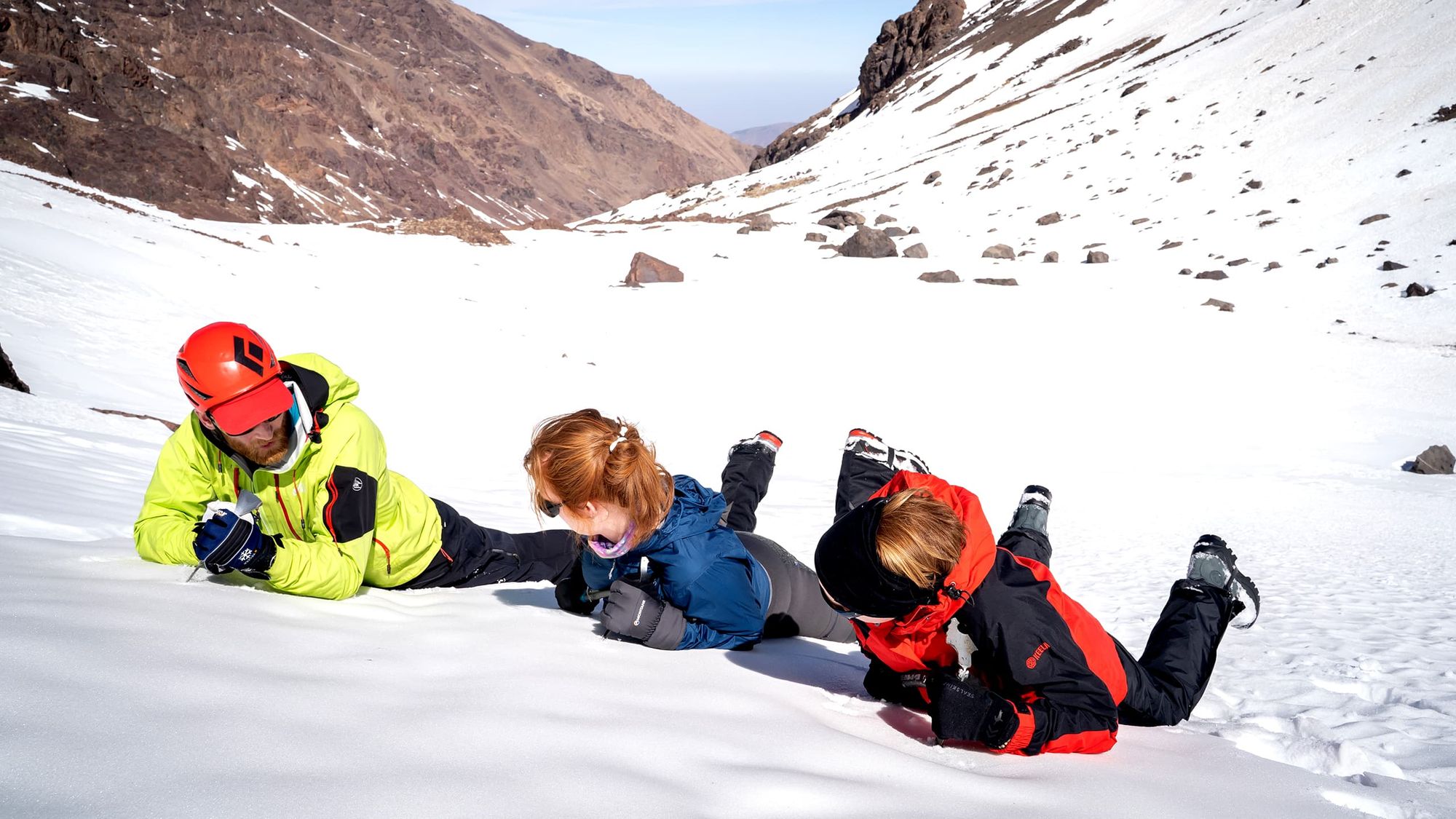
For those who are looking for expert instruction, there are plenty of options available. Connor’s company runs courses in winter mountaineering and winter climbing from its base in Fort William.
There are also subsidised courses available for those looking to gain more experience in the mountains. The Jonathan Conville Memorial Trust runs subsidised avalanche awareness courses, winter and alpine skills courses for 18-30 year olds. The BMC also runs winter hills skills courses, which Connor says are a good way into winter climbing.
What are the best winter climbing locations?
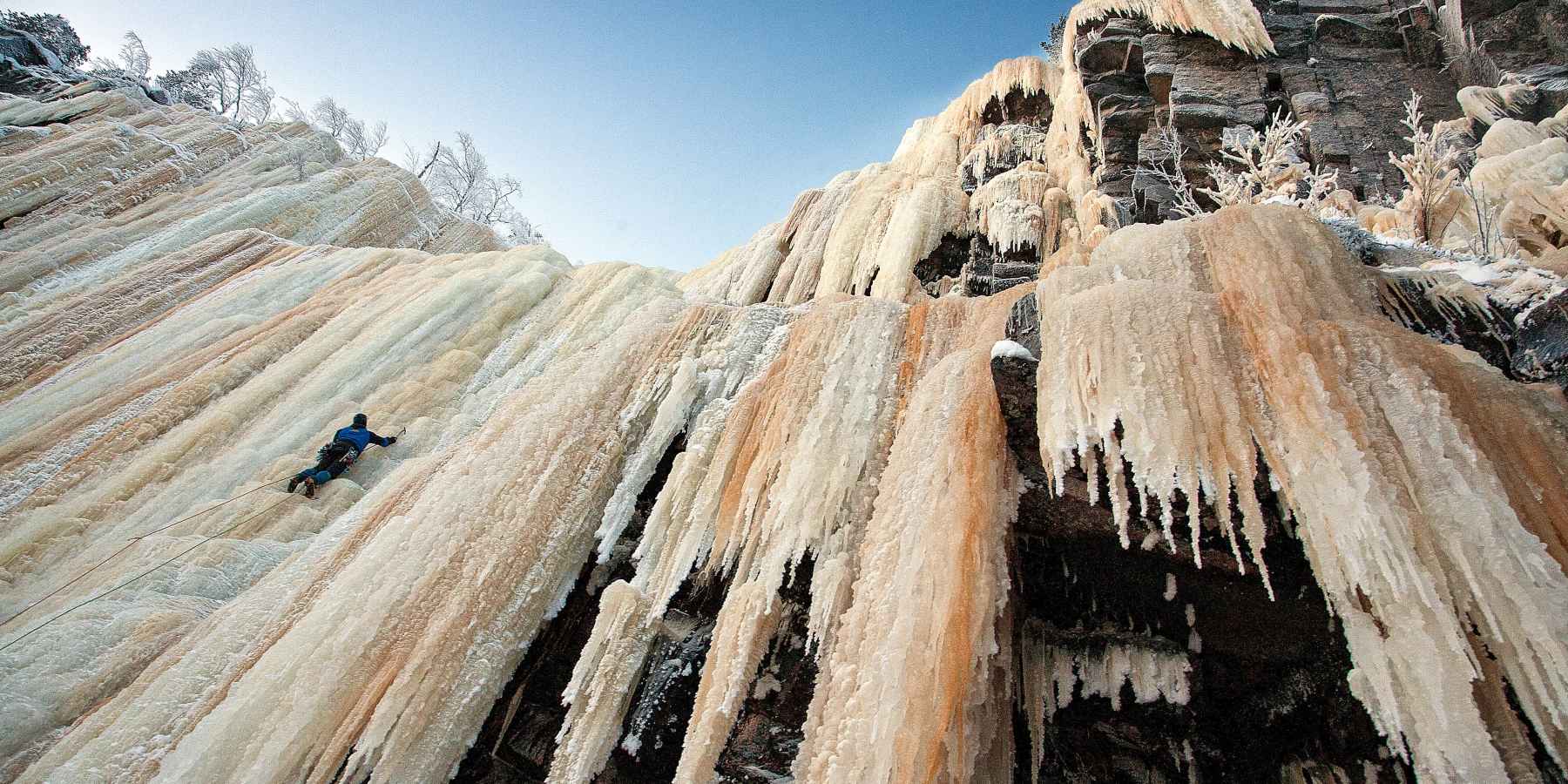
The jury’s out on this one, as there are so many different options. If you want to really embrace the cold, head to Pyhä-Luosto National Park in Arctic Finland. Head to Korouma Canyon - every year frozen waterfalls create the highest ice wall in Finland.
If you’re keen on testing out your winter mountaineering skills, you could try climbing Morocco’s Mount Toubkal in winter. At 4,167 metres it’s not for the faint hearted, but sunrise from the summit is incredible.
For Connor, however, the best location for winter climbing is in Scotland. One of his favourite spots is Tower Ridge, which protrudes from the north east of Ben Nevis.
“I've been really lucky to climb all over the world,” he says. “I've climbed unclimbed peaks in the mountains of Kyrgyzstan. I’ve been climbing in India, Norway, Georgia and all over Europe. But the place that really still does it for me is here at home in Scotland.”
Inspired? Check out Intro to Winter Climbing in Scotland and Summit Ben Nevis and Learn Winter Mountain Skills, developed by Connor and his team.


